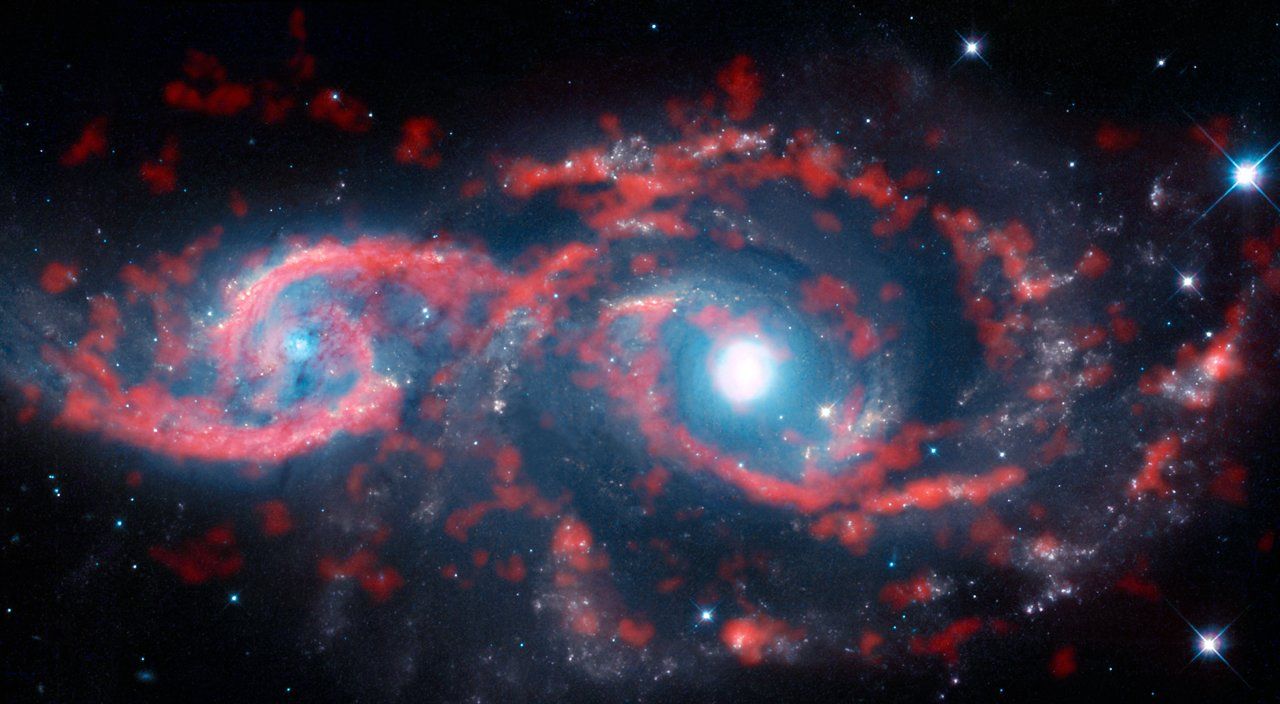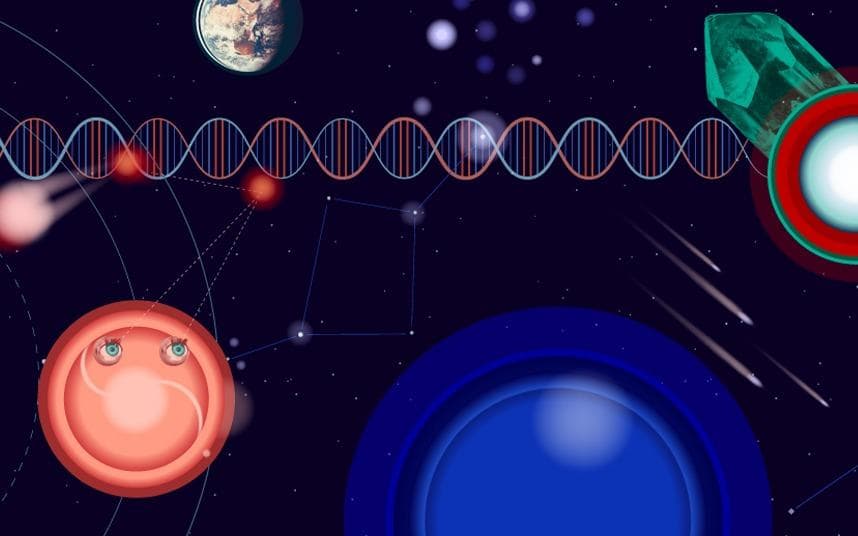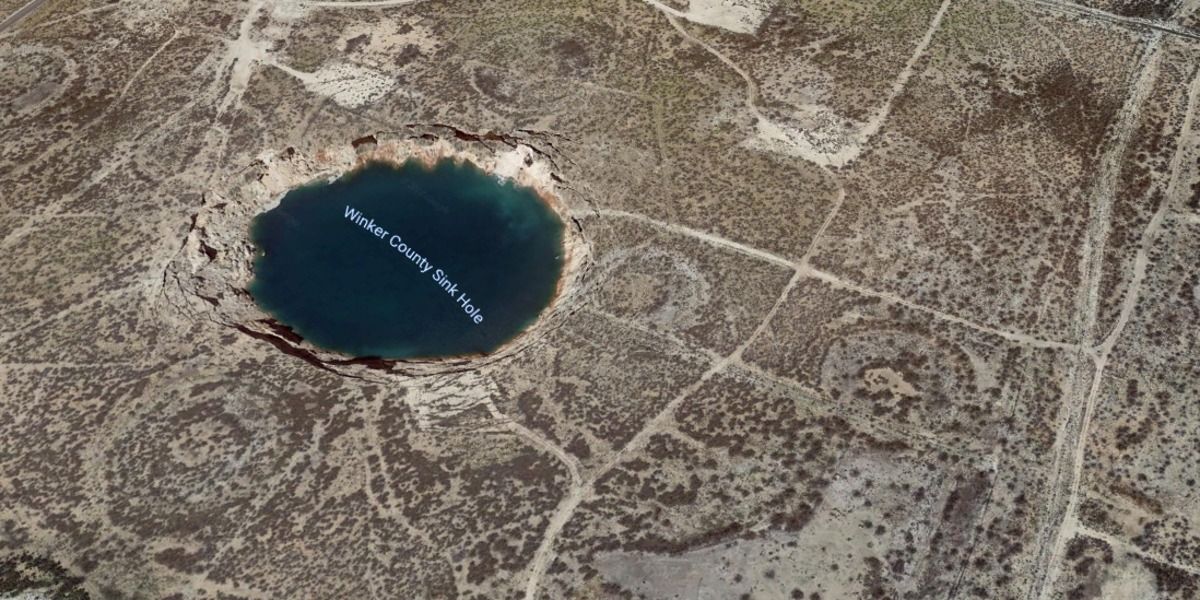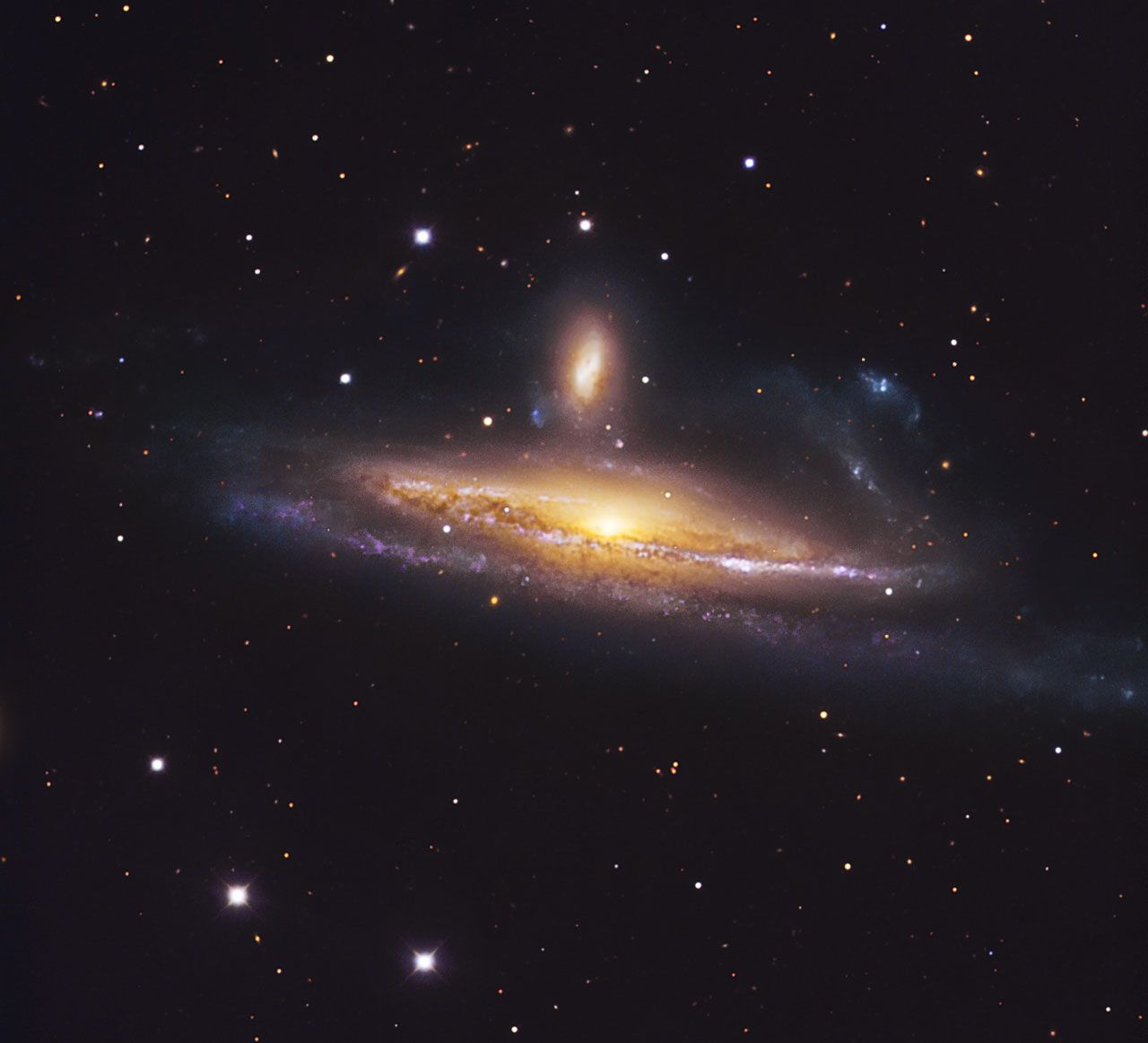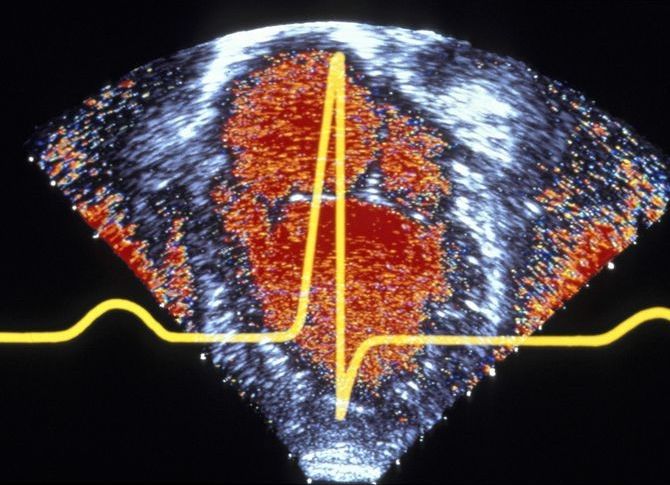Astronomers spend their time gazing out into the Universe — and occasionally the Universe seems to peer right back! This image, a composite of data from the Atacama Large Millimeter/submillimeter Array (ALMA) and the NASA/ESA Hubble Space Telescope, shows a very rare cosmic sight: a pair of interacting galaxies that have taken on an ocular structure.
As the name suggests, some types of grazing encounters between galaxies create shapes that resemble the human eye. While galaxy collisions of this type are not uncommon, only a few galaxies with eye-like, or ocular, structures have been observed. The paucity of these features is likely due to their very ephemeral nature — ocular structures like these tend to only last for several tens of millions of years, which is merely the blink of an eye in a galactic lifetime.
These two galaxies are named IC 2163 (left) and NGC 2207 (right) — IC 2163 displays the ocular structure in this image. The duo lies approximately 114 million light-years from Earth in the direction of the constellation of Canis Major (The Greater Dog).
